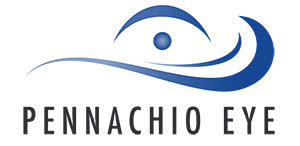Eye Exam Explained – Part One
 Routine eye exams are important for your overall health and well-being. If it’s been a while since you’ve visited your eye doctor, or you’ve never had an eye exam, it can be helpful to know what to expect when you visit the optometrist.
Routine eye exams are important for your overall health and well-being. If it’s been a while since you’ve visited your eye doctor, or you’ve never had an eye exam, it can be helpful to know what to expect when you visit the optometrist.
A comprehensive eye examination in Eustis includes several steps. During this visit, Dr. Pennachio uses various tests, tools and procedures to examine your vision as well as the health of your eye and recommends corrective lenses or further treatment if needed. A typical eye exam can take between 30 – 45 minutes depending on the health of your eyes, quality of your vision and if you need corrective lenses.
Most of your eye exam consists of various tests used to evaluate your vision. These include the following:
Visual Field Screening – This test is usually performed by the eye care assistant, also known as a technician, with the assistance of a machine to analyze your visual field. The machine then prints out a detailed reading of areas of the vision test that were or were not seen.
Tonometry – This test is important to determine your eye pressure in an evaluation for glaucoma. There are two main techniques used to test eye intraocular pressure (IOP):
- Non-Contact Tonometry is typically performed by an eye technician (not Dr. Pennachio). Many know this test as the one that blows a puff of air into the eye.
- Contact Tonometry is performed by Dr. Pennachio by touching a probe to the eye. A numbing drop is used during this test, so you won’t feel a thing. For this reason, many patients prefer this method over the non-contact method.
Retinoscopy – This is a technique to obtain the objective measurement of your prescription. It provides a way to estimate what your vision prescription may be. It can either be performed by an automated machine or it can be done manually with a retinoscope. The retinoscope shines a bright light into the eye, while Dr. Pennachio observes the reflection off your retina, he can determine your estimated prescription.
Refraction – This test uses a device called a phoropter to determine your corrective lens prescription. This instrument is used to test various lenses against your eyes, enabling Dr. Pennachio to determine the best power prescription for your eyeglasses or contacts. The phoropter measures the exact level of astigmatism, myopia or hyperopia you may have.
Eye Exam Explained Part Two to be continued…

